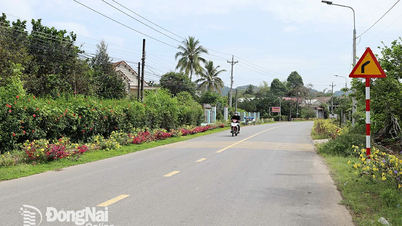Despite the surge in imports, less than one in 100 Chinese have ever tasted durian, so the huge potential of the market is prompting many Southeast Asian countries to join the competition, according to a report by Beijing-based consultancy Guanyan Tianxia.
 |
| People buy durian at the China-ASEAN Expo in Nanning, Guangxi Zhuang Autonomous Region, in September 2024. (Source: Xinhua) |
China's middle-class consumers are tightening their purse strings, but demand for durian - a spiky, uniquely flavoured fruit imported mainly from Southeast Asia - is still soaring.
In China's big cities, durian is not just a fruit but has become a " fashion choice", especially among young consumers.
The Chinese catering industry has quickly caught on to this trend and launched a series of attractive promotions that include durian gifts, attracting a large response from customers. The number of restaurants serving durian-flavored dishes, from drinks, desserts to hot pots and buffets, is constantly increasing.
On Douyin, China's version of TikTok, topics like "durian barbecue" and "durian buffet" have attracted more than 1.24 billion views. A brand in Guangdong province specializing in durian chicken hotpot has sold more than 2.22 million units, and its durian sandwiches have also attracted widespread attention on social media. A durian buffet restaurant in Shenzhen, Guangdong, recently went viral online for offering diners a choice of more than 200 dishes featuring Malaysian durian - including congee, pancakes and cakes - for 199 yuan (about $27.39) each.
The Chinese market now consumes more than 90% of the world 's durian supply, with imports soaring from 430,000 tonnes, worth $1.1 billion, in 2018 to 1.38 million tonnes, worth $6.2 billion, from January to September this year, according to official figures.
“Durian is sweet, creamy and easy to eat. Although it is difficult to eat all 199 yuan, my friends and I really want to try it,” said Su Yuru, an office worker in Shenzhen. “I often buy durian to share with my family on weekends, the price is around 150 yuan, and durian is also a regular dish at local companies’ afternoon tea and annual employee parties.”
Despite the surge in imports, less than one in 100 Chinese have ever tasted durian, so the huge potential of the market is prompting many Southeast Asian countries to join the competition, according to a report by Beijing-based consultancy Guanyan Tianxia.
Most fresh durians are imported from Thailand and Vietnam. China has also given the green light to imports from Malaysia and the Philippines, and Laos and Indonesia are also eyeing this lucrative market.
Thai durian, which began to be imported in 2003, dominated the Chinese market for many years, but since Vietnam entered the market in September 2022, the tide has turned somewhat. Thailand's market share has dropped from 95% in 2022 to 60% in the first nine months of this year, while Vietnam's has increased from 32% last year to 39%.
According to data from China Customs, Vietnam surpassed Thailand to become China's top durian supplier in the third quarter of this year and maintained the top position in November. It is estimated that in the first three quarters of 2024, China imported 1.38 million tons of fresh durian worth 6.2 billion USD.
In the third quarter of 2024, Vietnam's durian export turnover to China reached 1.342 billion USD, far exceeding Thailand's 878.95 million USD. In October 2024 alone, Vietnam exported 332.79 million USD, compared to Thailand's 132.37 million USD. In November, Vietnam exported 82.85 million USD compared to Thailand's 65.21 million USD.
According to Mr. Ding Wei, Chairman of the Ho Chi Minh City branch of the China Business Association, a number of agricultural trade groups from this country have invested in growing and producing durian in Vietnam. Logistics and packaging services such as storage and cold chain inspection to facilitate the transportation of durian are all undertaken by enterprises from China.
“These companies play a vital role in managing the supply chain, from transportation to customs clearance,” said Gary Lau, chairman of the Hong Kong Logistics and Freight Forwarding Association. “They often work with local exporters to ensure compliance with Chinese import regulations, which is becoming increasingly important given the growing demand for fresh durian in the billion-strong market.”
However, Mr. Ding also warned of increasingly fierce competition from Thailand and Malaysia. "The opportunity is huge, but we don't always see profits," he said.
Vietnam currently produces nearly 1.2 million tons of durian a year, an output that is expected to increase by 15 percent annually. The Philippines and Malaysia are also accelerating efforts to tap the Chinese market.
In April 2023, 18 tons of Philippine durians arrived in China's Guangxi Zhuang Autonomous Region via air. Philippine durian exports to China increased from 3,763 tons in the whole of last year to 6,260 tons in the first three quarters of this year. Malaysia began exporting fresh durians to China in June and shipped 215 tons worth $3.65 million in September.
Source: https://baoquocte.vn/dan-trung-quoc-phat-cuong-vi-sau-rieng-viet-nam-lan-dau-vuot-thai-lan-tro-thanh-nha-cung-cap-hang-dau-298922.html































































































Comment (0)